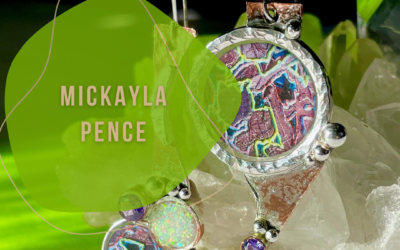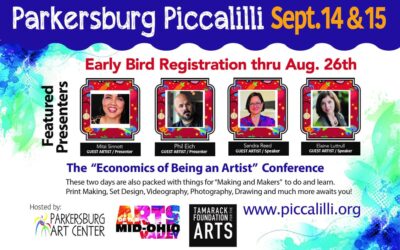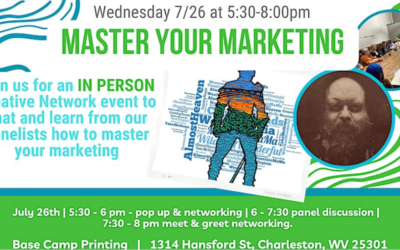|
https://mailchi.mp/tamarackfoundation/leslie-norris-2023-creative-entrepreneur-fellow-15378114
*|MC_PREVIEW_TEXT|*
** Leslie Norris
————————————————————
** “I think I was born drawing.”
————————————————————
Join us in Celebrating the 2023 Creative Entrepreneur Fellows
Exhibit Opening Saturday 8/26 6:00pm at Taylor Books in Charleston, WV
on display 8/26 – 9/31 | Details (https://tamarackfoundation.org/2023-cef-exhibit/)
Leslie Norris has been drawing her whole life. Her earliest school memories are connected to drawing, although with mixed reviews.
“I loved getting to draw on the board in front of the class,” says Norris. “When I was in third grade my teacher, Ms. Nile, took me to the first grade to teach the class how to draw a cat.” On the other hand, her teachers had to remind her to complete her tests and reports without drawing in the margins.
“I was lucky my mother and my teachers were supportive of my art,” she says. “They encouraged me to pursue my interest.”
Norris grew up in Newell, Hancock County. She recalls spending much of her time playing in the woods and on the back streets of the small Northern Panhandle town known for its pottery industry. The town and the people left lasting impressions of the importance of community and on the work she creates. As a teenager, she was encouraged to leave West Virginia to pursue her artistic interests.
“But I was heartsick for the land, the people and the communities here,” she says. “So I came back.”
Norris knew she wanted to be an artist when she enrolled at West Virginia University’s School of Art and Design. “I assumed I would be a traditional artist until I took a summer course in printmaking with Professor Joseph Lupo,” she says. “As soon as I saw this I thought to myself, ‘I’m done!’”
Today, Norris is establishing herself as a printmaker. She lives in Morgantown and does her art work in most of the space of her under 600 square-foot home. There’s equipment everywhere and not much space for anything else. So far, it’s working for her.
“I have a full-time position with Coalfield Development and my print making business, Sugar Pop Press,” she says. “I tell people my work and my work contribute good things to Appalachia and my communities.”
It took Norris about four years to hone her skills as a print maker and to acquire enough equipment to get serious about her work. She’s been working as a printmaker for seven years and likes the versatility and affordability of this art form.
“All of my prints, or serigraphs, start with hand-drawn sketches and pictures,” she says. “I like to mix traditional art with contemporary themes.”
Her prints feature bright colors and nostalgic whimsy, often focusing on companionship, moments of reflection and imagination at playtime. Each print is built as its own world with its own story which Norris tells by layering together precious memories and consumerism.
“My work is at once retro and subtly subversive,” she says. “I hope people recognize images of ordinary things that are all around us and that many people just don’t see in our daily cultural parade.”
She cites the example of a print that features Mr. Zip, the character used by the US Postal Service in the early 1960s to teach children to use the new Zip Code as they got older and to encourage their parents and grandparents to use it as well.
“Adults were not excited about the Zip Code, but young children are open to new ideas and Mr. Zip had a perfect audience when he told kids that the new code would help the Post Office do a better job of delivering mail,” she says.
When she incorporated Mr. Zip in the print, she was reminding herself of something that is an important lesson to her. “When I feel hopeless, I think about kids today and how willing they are to learn and to come up with a positive, new idea,” she says. “I try to always keep in mind the stories of my life and where I want to go as I work on my art.”
Norris creates her work using water-based paints on recycled paper. This allows her to lessen her work’s ecological footprint and still maintain archival quality work. Each color of an image is exposed on its own high-mesh screen and individually registered one color at a time. She uses two hinge clamps and a board for her print station.
As she builds her serigraph business and continues her work with Coalfield Development, Norris sees an arts future that is built around communities and shared spaces.
“My long-term goal is to establish a space for my print making that is large enough to share with other print makers and artists,” Norris says. “I want to be able to share what I know with others and to learn from them as well. When you have that kind of opportunity, everyone benefits from the space they share and the people they work around.”
She believes this makers’ space will contribute to more pride in Appalachian art and in the region’s opportunities for artists.
“I want artists to realize they can stay in West Virginia and have success with their work so they don’t feel like they have to leave to become an artist or feel like a failure because they want to stay home to work,” she says.
Through the Tamarack Foundation Creative Entrepreneur Fellowship, Norris hopes to learn more about the business of being an artist and how that can help her succeed.
“Knowing how to run a business is as important as making good work,” she says. Just as printmaking is a process of carefully laying one screen on another to complete a print, operating a business is about understanding and working with the layers of strategic planning, communications and finance.
“Getting to meet with the other fellows, the workshop leaders and the Tamarack Foundation staff is a great way to learn,” Norris says. “When you talk to other artists and listen to what they are trying to do, you realize the business aspects don’t come naturally to a lot of people.”
She likes being able to talk with others about simple topics as well as complicated issues.
“For instance, other artists can sympathize when you say it was important to learn ways of not getting cat hairs on your prints,” she says with a laugh.
View this email in your browser (*|ARCHIVE|*)
============================================================
** Twitter (http://www.twitter.com/)
** Facebook (http://www.facebook.com)
** Website (http://mailchimp.com)
Copyright © *|CURRENT_YEAR|* *|LIST:COMPANY|*, All rights reserved.
*|IFNOT:ARCHIVE_PAGE|* *|LIST:DESCRIPTION|*
Our mailing address is:
*|LIST_ADDRESS|* *|END:IF|*
Want to change how you receive these emails?
You can ** update your preferences (*|UPDATE_PROFILE|*)
or ** unsubscribe from this list (*|UNSUB|*)
.
*|IF:REWARDS|* *|REWARDS_TEXT|* *|END:IF|*







